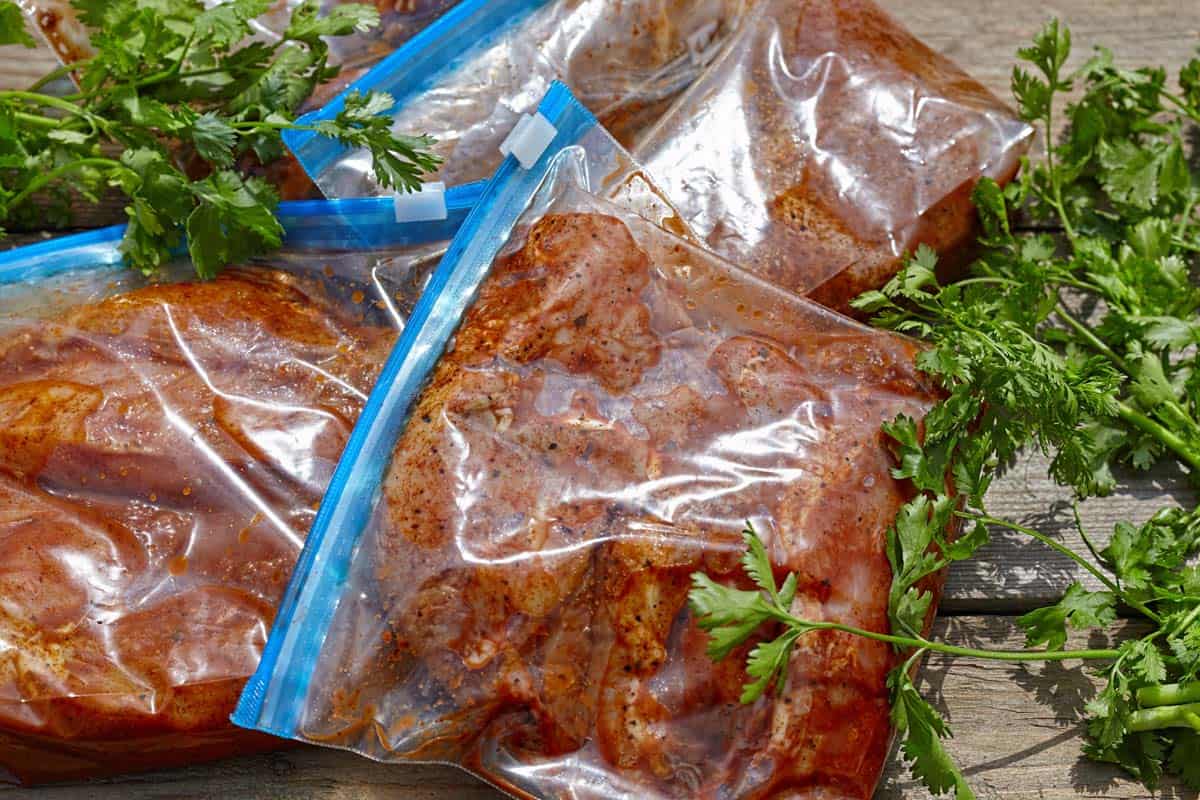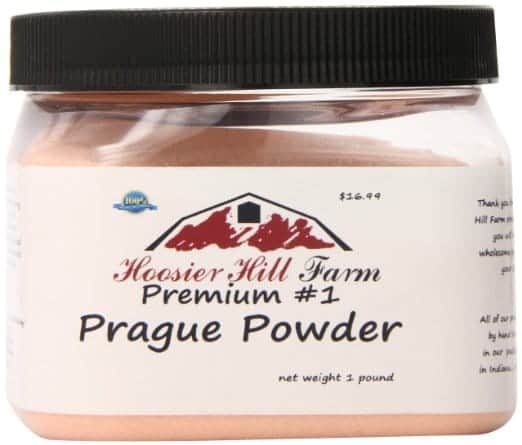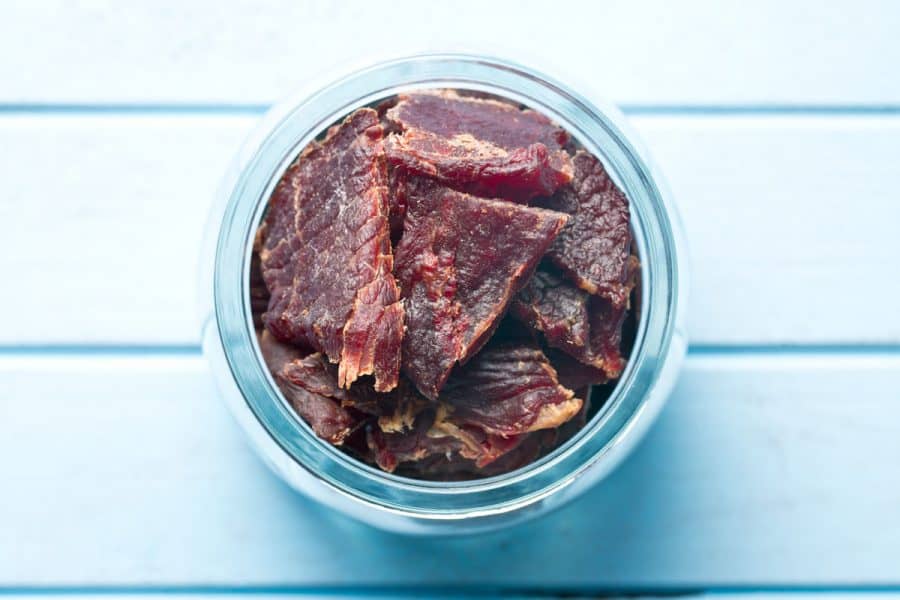Since the early pioneers, beef jerky has been a favorite among American carnivores, and there are as many different versions and recipes as there are flavor profiles. Here are some suggestions for creating your own, along with links to our Deer Seasoning and Jerky recipes.
- Use quality fresh meat, leaner cuts.
- Cut into strips or slabs, cutting with the grain.
- Marinate in Salt & Malt Vinegar.
- Cover in Toasted Coriander and other spices of preference.
- Dry with a Fan, Dehydrator or Curing chamber.
- Store in a brown paper bag will dry out, but last 2-3 weeks.
How to make safe jerky
1. Clean your kitchen with water and bleach, as well as all other appliances, bowls, and surfaces. Additionally, prior to handling any raw meat, wash your hands with soap.
2. To stop bacteria growth, thaw frozen meat in the refrigerator as opposed to at room temperature. I frequently witness individuals leaving meat on the counter for several hours. This is NOT safe and should NOT be done. Give your meat plenty of time to thaw in the refrigerator.
3. Marinate the meat at a temperature between 36-40°F (2°C-4°C). Do not marinate at room temperature. While preparing your marinade, keep the meat in the refrigerator. When raw meat is left out at room temperature, bacteria can quickly multiply. After marinating, do not save and re-use a marinade.

4. Heat the jerky to 160°F (71°C) before dehydrating it to eradicate potentially harmful bacteria. BEFORE drying your strips, jerky needs to be heated to 165°F for turkey or chicken jerky and 160°F for beef in order to be safe.
Due to the jerky becoming more heat resistant during the drying process, heating the jerky after dehydrating may not completely eliminate all bacteria. For this reason, the USDA advises bringing your jerky to 160°F at the beginning of the jerky-making process.
You can skip this initial heating stage if you have a dehydrator that can heat jerky to this temperature. See my page on Dehydrator Reviews for more information.
If your dehydrator does not heat the jerky to 160°F, pre-heat the meat in an oven after it has finished marinating. As an extra precaution; I ALWAYS pre-heat any turkey or chicken jerky I make, as well as use curing salt, to make sure it is safe to eat. I like being as safe as possible when using fowl.
Pre-heat ¼″ slices of beef to 160°F, it takes about 10 minutes in a 300°F (149°C) oven. To pre-heat ¼″ slices of turkey to 165°F, about 8 minutes at 300°F (149°C) does the job. Not all oven are the same, so wrapping one strip around an oven thermometer while baking is the best way to determine when the jerky strips reach the desired temperature.
5. Use curing salt to help prevent bacteria from growing. In this age where the craze is only eating Organic Foods, curing salt might not be in your recipes. While I do understand the staying away from preservatives, be extra careful when not using them when making jerky!
The negative effects that many people believe come from using these salts are unfounded when the proper amount of curing salt is used. Follow the other safety precautions closely if you choose not to use curing salts. Eat the jerky within a few days after making it by heating the meat to 160 degrees Fahrenheit to kill any bacteria.

With that said, I DO recommend using cure when making ground meat jerky because the meat has been handled and processed making it more susceptible to having bacteria. I also recommend using curing salt when making turkey or chicken jerky due to salmonella.
In conclusion, no jerky recipe NEEDS curing as long as beef is heated to 160°F and poultry to 165°F. However, it adds a further line of defense against bacteria and lengthens the shelf life of your jerky.
6. Jerky can be kept for up to a week in a cool, dry place, or it can be vacuum-sealed and frozen for up to six months.

That’s it, folks! Making jerky is enjoyable and incredibly satisfying. Just remember to follow these safety recommendations to keep you and your loved ones secure when making and consuming homemade jerky.
For more information, visit the USDA Webpage on Jerky and Food Safety.
Curing Beef Jerky
FAQ
What is the best cure for beef jerky?
When making properly dried jerky or other meat snacks that you want to have the best shelf stability, you should stick with sodium nitrite or nitrate because celery juice powder isn’t considered to be a curing agent. Celery juice powder is less effective at preventing bacterial growth than sodium nitrite and nitrate.
How long does it take for beef jerky to cure?
The recommended curing time is 24 hours for stripped meat and 12 hours for ground meat; my jerky turned out to be very salty. It will become too salty if you let it sit for too long to cure. If done properly, you can reduce the cure by 1/2 teaspoon for every pound of meat.
Does beef jerky need to be cured?
Is a cure necessary when making jerky? For safety, yes. Because jerky is dried at low temperatures rather than being cooked, using a jerky cure will stop the growth of bacteria and prevent botulism or other foodborne illnesses. Cured jerky will also lengthen the shelf-life of your product.
How long does beef jerky last with curing salt?
Curing Salt: To increase the shelf life of their jerky to one year, the majority of commercial producers use a salt cure that contains sodium nitrite. By doing this, bacteria that might survive in meat if exposed to oxygen are prevented. It is not necessary to use a remedy, and the majority of home-cooked meals do not call for one.
